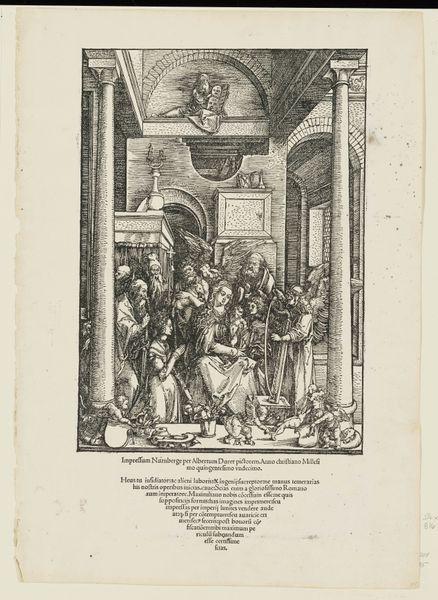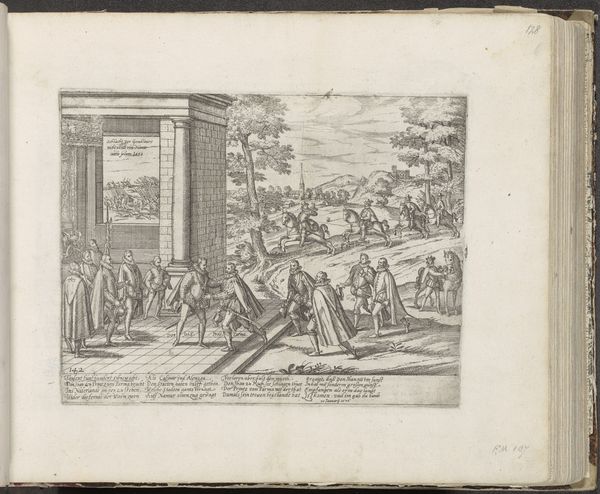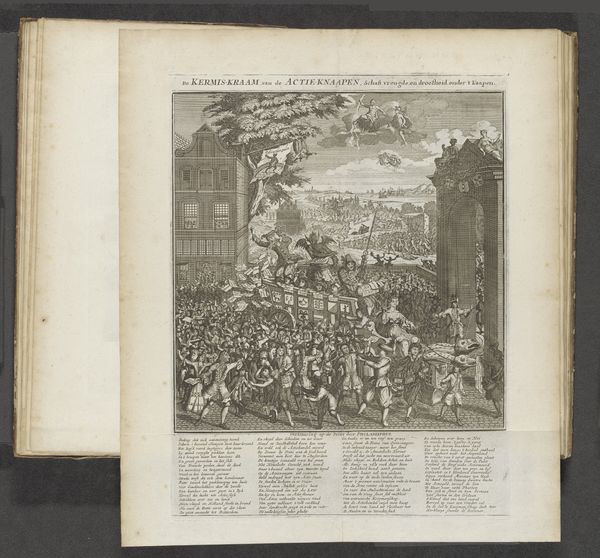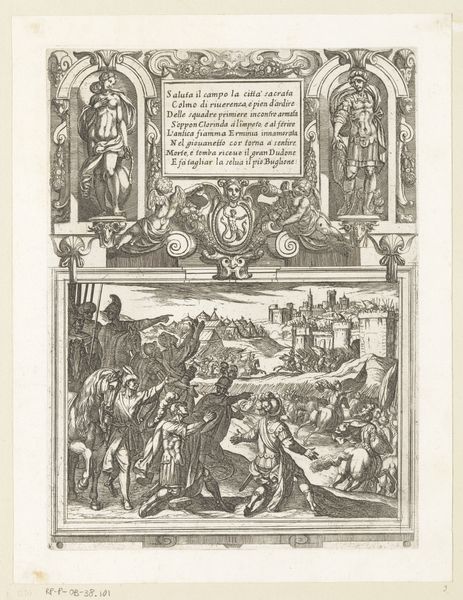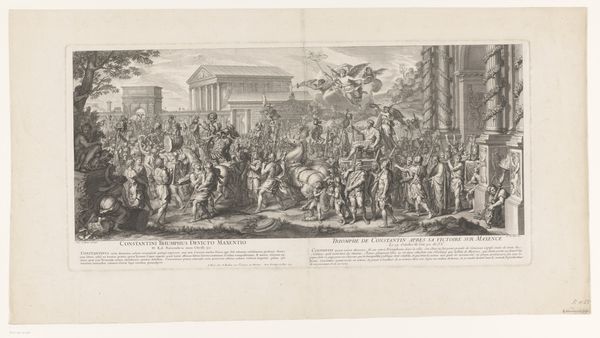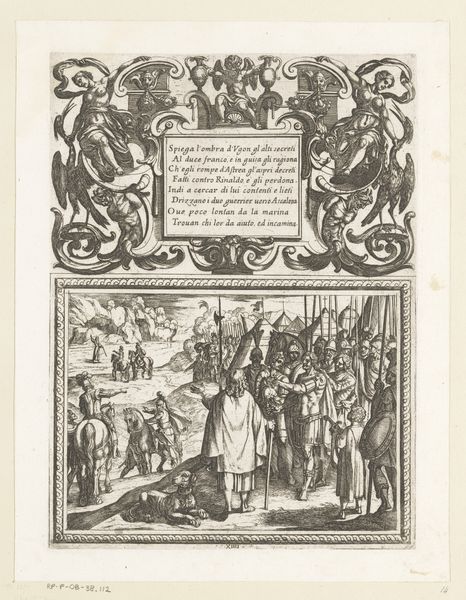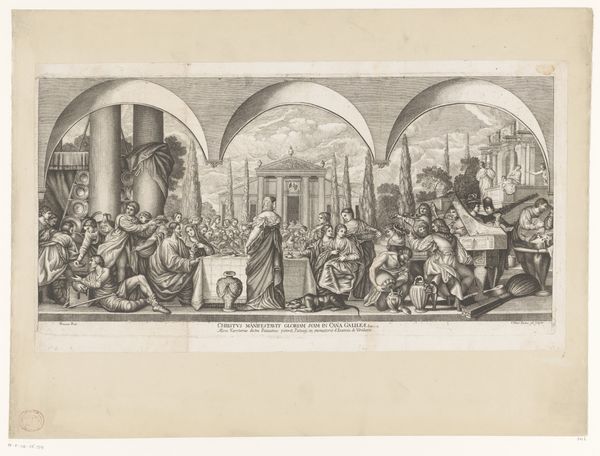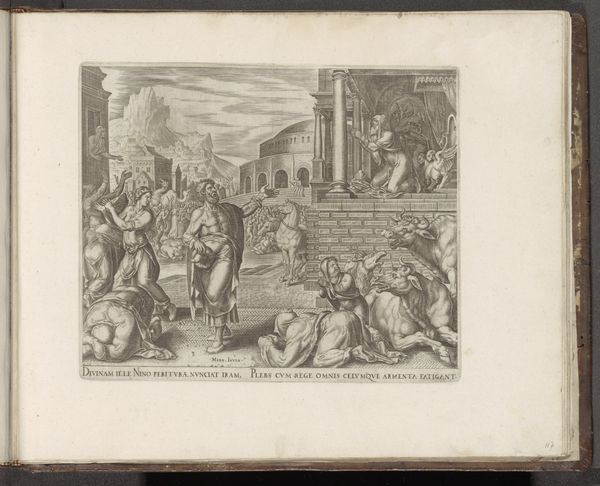
Het Nijmeegse Raadsel of het Gecompliceerde Huwelijk, 1619 1698 - 1721
0:00
0:00
graphic-art, print, etching, engraving
#
graphic-art
#
narrative-art
#
baroque
#
dutch-golden-age
#
ink paper printed
#
parchment
# print
#
etching
#
old engraving style
#
engraving
Dimensions: height 273 mm, width 361 mm, height 191 mm, width 346 mm, height 473 mm, width 375 mm
Copyright: Rijks Museum: Open Domain
Curator: What catches my eye right away is the sheer density of figures, almost crammed into the frame! It gives me a feeling of claustrophobia, actually, even though it's just a print. A story unfolding in every little cluster of characters... kind of unsettling. Editor: And it is a rather complex tale this graphic art narrates. This print, "Het Nijmeegse Raadsel of het Gecompliceerde Huwelijk" from somewhere between 1698 and 1721 is thought to be by Romeyn de Hooghe. A fascinating Dutch Golden Age commentary, presently held here at the Rijksmuseum. The etching and engraving on paper speak volumes about its era. Curator: A "complicated marriage" indeed! Baroque sensibilities, I suppose. All that detail, the way they are clustered... the contrast from dark shadows. But tell me, what's the riddle here, in its socio-historical meaning? Editor: Well, broadly it lampoons marital complexities using the allegorical traditions of its day, no doubt, but digging deeper into the print shows the era's deep engagement with both matrimony as institution, and its political interpretations too. In essence, works like these showcase the visual languages shaping public opinion through often sharp, satiric social critique. Curator: Ah, a conversation piece then! Look at how they are looking in various directions... almost staged. Does the architecture mean something specific here? Is that a literal building, or an allegory as well? Editor: Very likely both! De Hooghe’s skill lies precisely in that double register. The architectural elements would certainly evoke familiar structures to his audience, rooting the scene in recognizable social spaces, while also functioning symbolically. It grounds it even as the symbols play on your knowledge of political situations. Curator: It’s a whirlwind. After staring at it, I can imagine those dark lines were literally incisive! Editor: Indeed, art like this served an important public role in disseminating commentary. Curator: You’ve given me new appreciation to go further and unravel the mystery myself. Editor: Its complexity makes a return visit seem necessary, and for that I appreciate De Hooghe's effort as well.
Comments
No comments
Be the first to comment and join the conversation on the ultimate creative platform.
